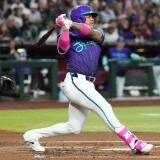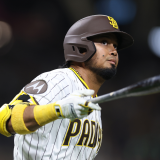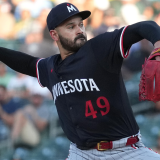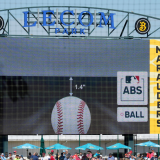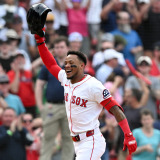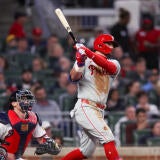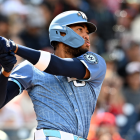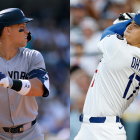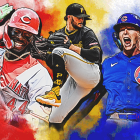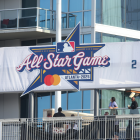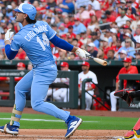MLB lockout: Everything to know about baseball's first work stoppage since 1994-95
Why is there a lockout? What are they fighting over? How long will it last? Let's answer as best we can
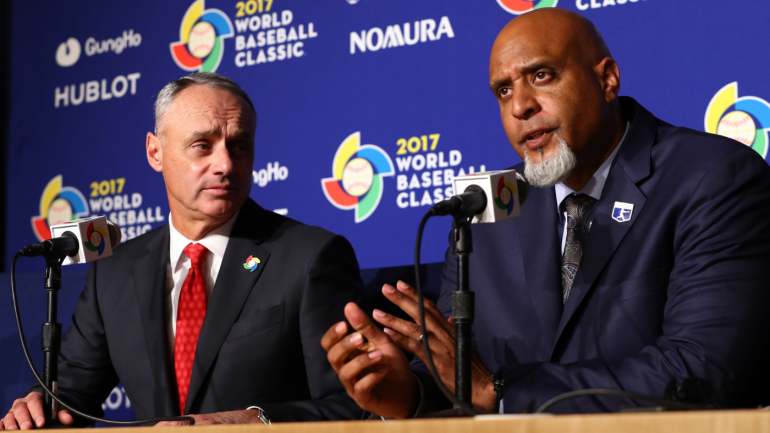
At 11:59 p.m. ET on Dec. 1, the collective bargaining agreement (CBA) -- the negotiated accord that governs almost every aspect of the working relationship between Major League Baseball players and team owners -- expired. Less than two hours prior to that deadline, however, owners voted unanimously to force a work stoppage on Thursday. They did so in the form of a lockout. As such, baseball will endure a work stoppage for the first time since the players' strike of 1994-95.
Speaking of which, you may right about now be wondering what a lockout is, how it works, what the point of it is, and what it means for the sport. Thankfully, we are here, outfitted in our Plus-10 Velvet Brocade Pants of Wisdom, to explain all of that.
Shall we commence? We shall commence in time-honored FAQ fashion.
What's a lockout?
There are in essence two kinds of labor stoppages. A strike is when the labor side -- players as represented by their union, in this instance -- puts a halt to operations. A lockout is when the management side -- team owners in this instance -- initiates the stoppage. In plainspoken terms, a strike is a refusal to work, and a lockout is a refusal to permit work to be done.
In the sphere of Major League Baseball, a lockout means that the free agency process would be frozen with some big names still on the market (this freezing is why we saw such a swarm of signings leading up to the CBA expiration date). Since all transactions will be put on hold, a lockout also means no trades. Players will be barred from using team facilities during the lockout, and if the stoppage lasts for more than just a few days then the Winter Meetings and Rule 5 Draft will be canceled and postponed indefinitely, respectively. If the lockout stretches into January, then the exchange of arbitration figures between eligible players and their teams will be delayed. Get well into January without an agreement, and the spring training schedule could be imperiled. The worst-case scenario is that the lockout lasts long enough to force the rescheduling or even cancellation of regular-season games. It's a bit premature to fret over that right now, but it's within the range of possible outcomes.
Bottom line: A lockout means the sport is on hold across all fronts until further notice. "Further notice" in this instance almost certainly means when a new CBA is agreed to in principle.
Why is there a lockout?
As indicated above, it's because a new CBA has not yet been agreed to and that owners are unwilling to allow the offseason to proceed without one. Like those owners, players aren't typically fond of moving forward with the usual offseason and in-season calendar without a CBA in place, and they would likely strike close to the start of the season or during the season when their leverage is higher.
Owners, however, don't want the players to gain such leverage, so a lockout well in advance of spring training is in some ways a preemptive measure on the part of owners and commissioner Rob Manfred (whose job is basically to do the bidding of the team owners). The aim is not only to accelerate the pace of CBA negotiations but also to make it more likely that the players will bend to the owners' will on multiple fronts. Above all, this is an attempt by teams to put pressure on the union to agree to the owners' suite of proposals for the next CBA. Further, teams hope that bringing the game to a halt with some unsigned players still out there will undermine union solidarity as the lockout drags on.
"This shutdown is a dramatic measure, regardless of the timing," the MLBPA said in a statement. "It is not required by law or for any other reason. It was the owners' choice, plain and simple, specifically calculated to pressure Players into relinquishing rights and benefits, and abandoning good faith bargaining proposals that will benefit not just Players, but the game and industry as a whole."
How long will the MLB lockout last?
This is unknowable. It's an entirely fluid situation, but both sides some time ago expressed what can be termed as "soft optimism" that something would get done before the current CBA expired. That didn't come to pass, but it does suggest there's at least a foundation in place. In the past, some labor stoppages have lasted less than a week, and others have been numbered in months. The latter would visit massive upheavals upon the sport, and there are heavy incentives on each side to avoid having it come to that. For now, the default assumption is that matters are resolved before the regular season is affected.
Manfred, in a Thursday morning press conference, expressed optimism about starting the 2022 regular season on time.
What are they fighting over?
From the players' standpoint, they'd like to address their shrinking share of those league revenues (indicated in part by the declining average player salary), the occasional practice of service-time manipulation (i.e., when teams hold back a clearly ready prospect in order to delay his free agency and arbitration eligibility for a full year), and the "tanking" problem, among other matters. Teams have increasingly trended younger in their roster construction, and the union will be fighting to get those younger players paid more in line with their on-field value while also seeking incentives to make teams more competitive with one another. The owners, meantime, will likely be looking to maintain the status quo since the expiring CBA largely worked out to their benefit. In the end, yes, it's a fight over money, which, to be fair, is a very good reason to fight.
Has this happened before?
This marks the fourth lockout since MLB and the union negotiated the first CBA back in the late 1960s. The first owner lockout was in 1973 and was resolved before any regular season games were affected. The 1976 lockout came next, and it also ended without any effect on the regular season. Then came the 1990 lockout. Again, no regular season games were canceled, but spring training was greatly compromised. As well, the start of the regular season was pushed back.
To the extent that lockout history is any guide, it would be surprising if the lockout of 2021 lasted long enough to alter the 2022 regular season schedule.
![[object Object] Logo](https://sportshub.cbsistatic.com/i/2020/04/22/e9ceb731-8b3f-4c60-98fe-090ab66a2997/screen-shot-2020-04-22-at-11-04-56-am.png)


